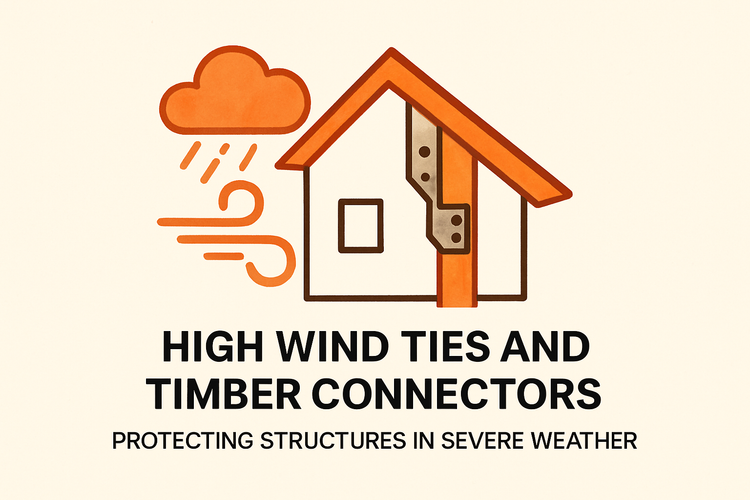High Wind Ties And Timber Connectors: Protecting Structures In Severe Weather

Understanding the Role of High Wind Ties
High wind ties are essential in areas prone to severe weather, especially for ensuring structural stability during storms. These metal components connect various wooden structural elements and help resist uplift and lateral forces.
High wind ties are typically installed at critical connection points between the roof, walls, and foundation, providing a continuous load path. In the event of high winds, such as during a hurricane or gale, these ties distribute the stress more evenly across the structure, preventing catastrophic failures. Their effectiveness has made them a standard in modern construction, especially in regions where wind speeds can pose a significant threat to building integrity.
Timber Connectors: The Backbone of Durable Construction
Timber connectors play a crucial role in enhancing the mechanical strength of timber joints. They are particularly vital for joining beams, columns, and other structural elements subjected to high loads and weather fluctuations.
Timber is a highly sustainable but inherently flexible building material, which is both an asset and a limitation. While this flexibility can absorb shocks, poorly connected frames can separate or collapse under pressure. Connectors for cross laminated timber and glulam timber provide the necessary rigidity and reliability by reinforcing joints and enhancing the timber’s structural load capacity. Proper installation of these components reduces the long-term wear on wood due to environmental stressors.
These connectors vary in size and material and are selected based on the structure's architectural requirements and the weather conditions it will face. Whether used in residential homes or large commercial buildings, they ensure that the structure remains interconnected, strong, and safe even under duress.
Effective Integration with Roofing Structures
Securing the roof is paramount during severe weather events. Roof connectors and wind ties help transfer energy loads safely through the structure and into the ground, preventing dislocation at vulnerable joints.
When combined with roof connectors, high wind ties can shield the upper segment of a building from wind uplift, a common cause of roof failures in storms. Roofing systems benefit massively from holistic integration: by combining multiple fastening and reinforcing solutions, the structure becomes a cohesive unit rather than loose or isolated segments.
This approach not only prevents partial collapses but extends the lifespan of the roof framing, offering a long-term cost benefit. Builders are encouraged to assess wind exposure zones when choosing these connectors and ensure that fasteners such as stainless-steel nails or bolts accompany them.
Strategic Connection at Ground Level with Post Bases
The foundation is where high-strength connections begin. Using quality post bases gives vertical supports their much-needed stability and resistance to lateral forces introduced by wind.
Post bases create a defined anchor point between timber posts and concrete or ground-level footings. During high-wind events, pressure from the roof or upper structure can transfer downwards, putting significant stress on these areas. Reinforced post base systems are tailored to withstand these forces without cracking or shifting.
Along with high wind ties, post bases help establish a reliable load path from the top of the building to the ground. This dual-protection approach is fundamental in hurricane-prone areas. Builders often accompany these with restraint straps for added torsional stability when tall, narrow walls are involved.
Complementary Systems: Joist Hangers and Restraint Straps
Joist hangers and restraint straps complement the use of timber connectors and high wind ties by reinforcing connections in horizontal elements like floors and ceilings.
Joist hangers secure beams and joists to supporting walls or ledger boards, reducing the chance of movement or separation caused by vibration or wind tilt. This is especially important in multi-story buildings or open-concept spaces where long spans are common. The hangers ensure that any wind-induced motion is absorbed and distributed safely.
Meanwhile, restraint straps keep structural elements aligned and resist tilting or rotating forces often created by uneven wind loading. Their importance grows in structures with less bracing or thin wall systems, offering a straightforward way to improve stiffness and safety without overengineering the framework. Together, these components form part of a broader high-wind protection strategy that works in multiple directions: horizontally, vertically, and diagonally.
